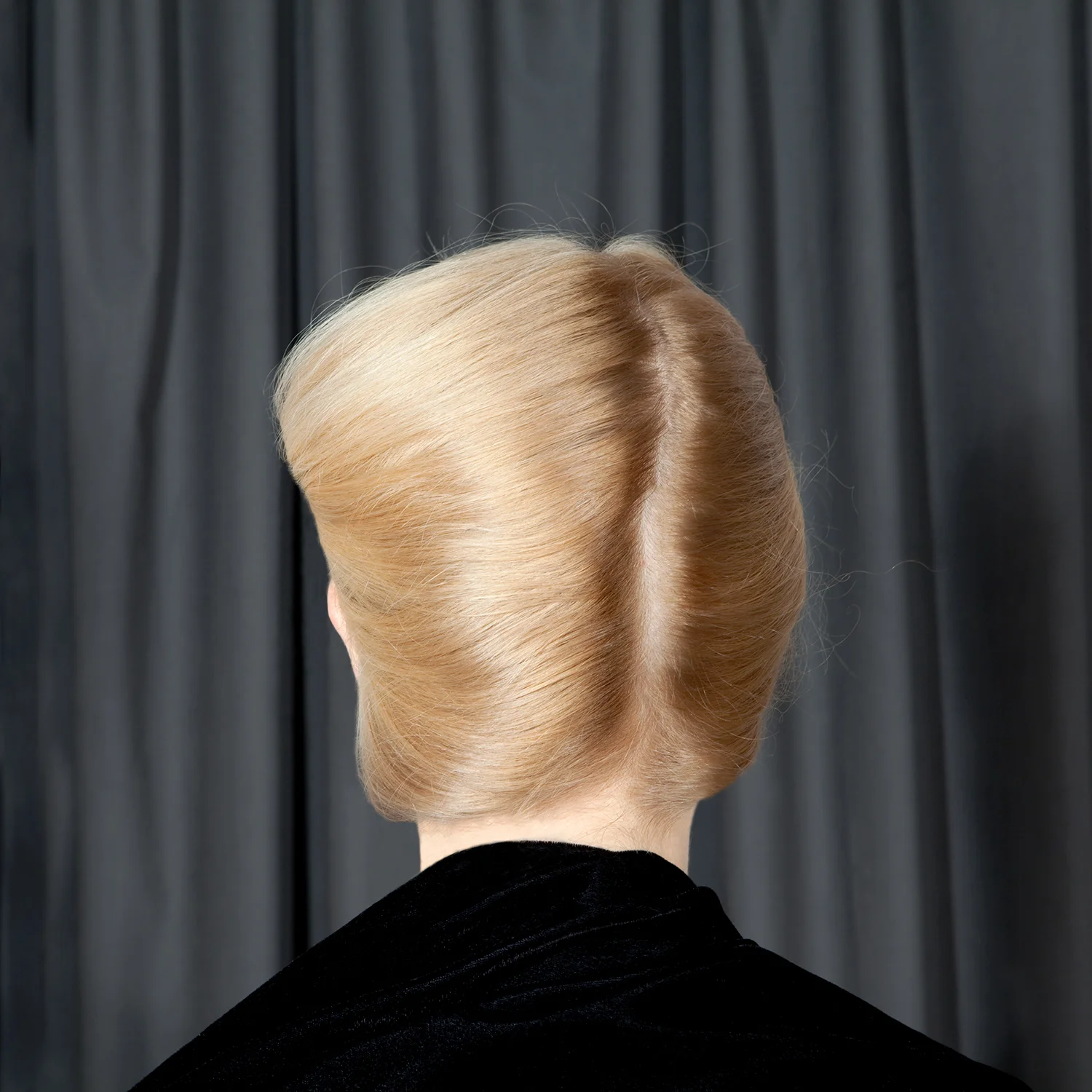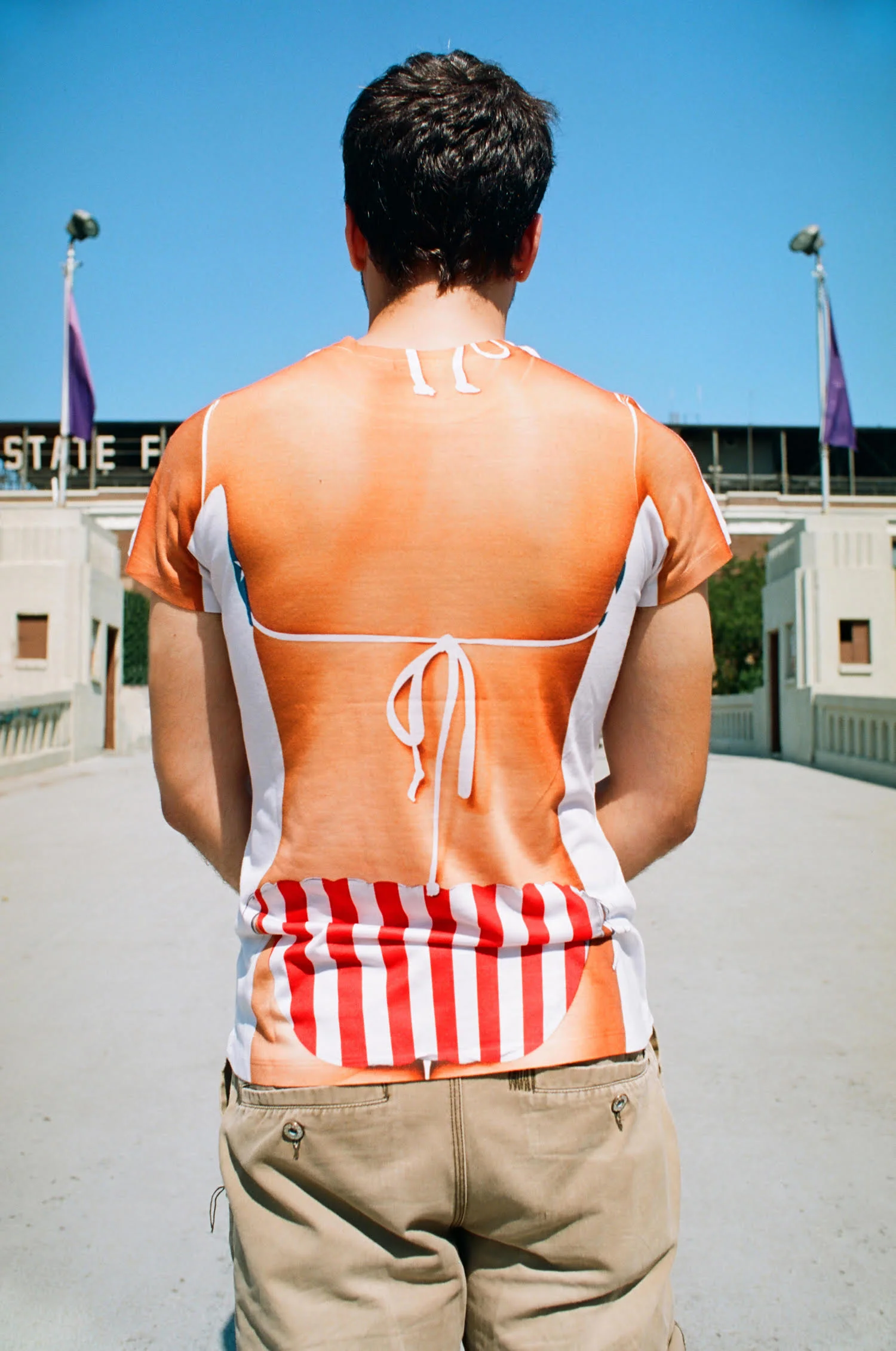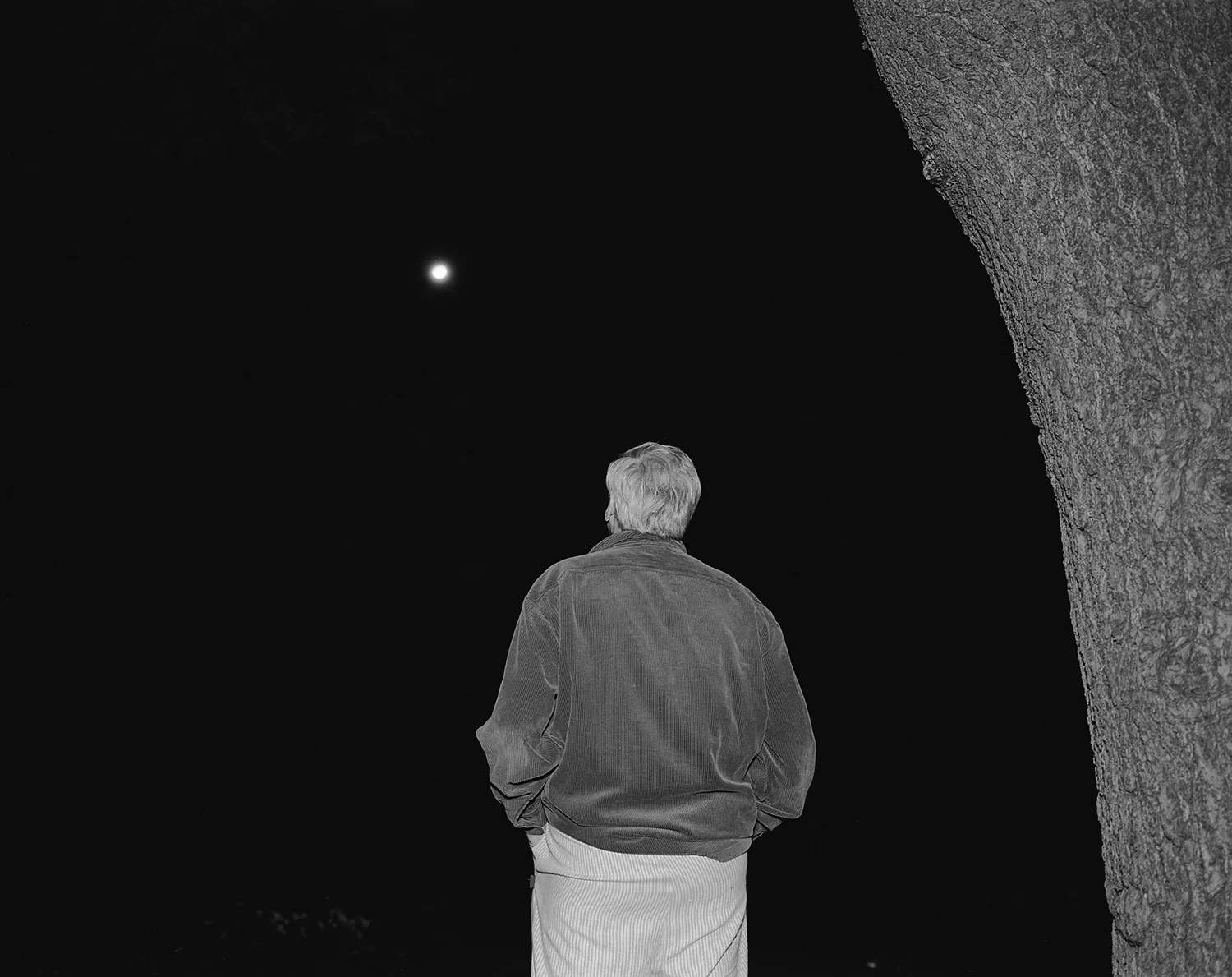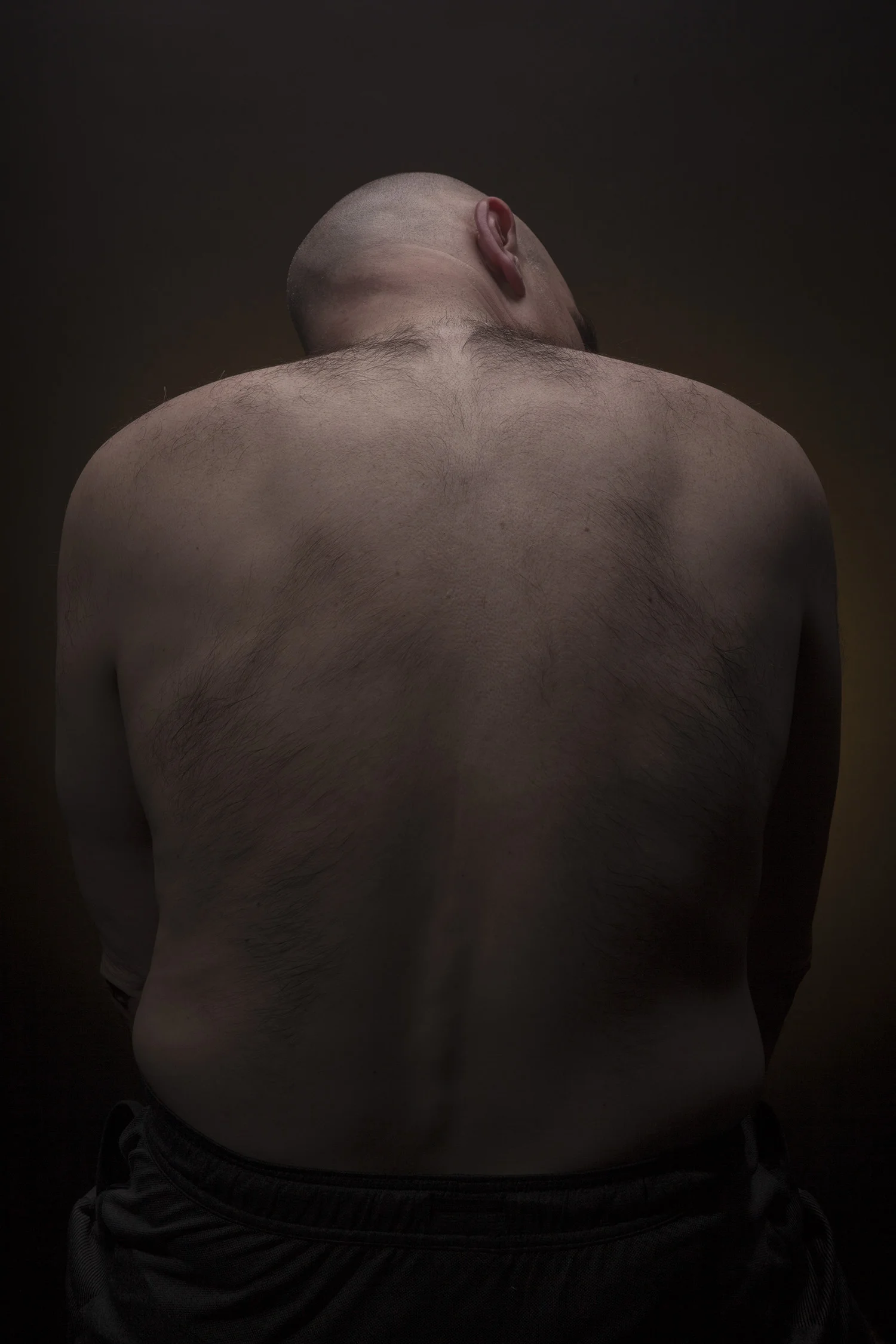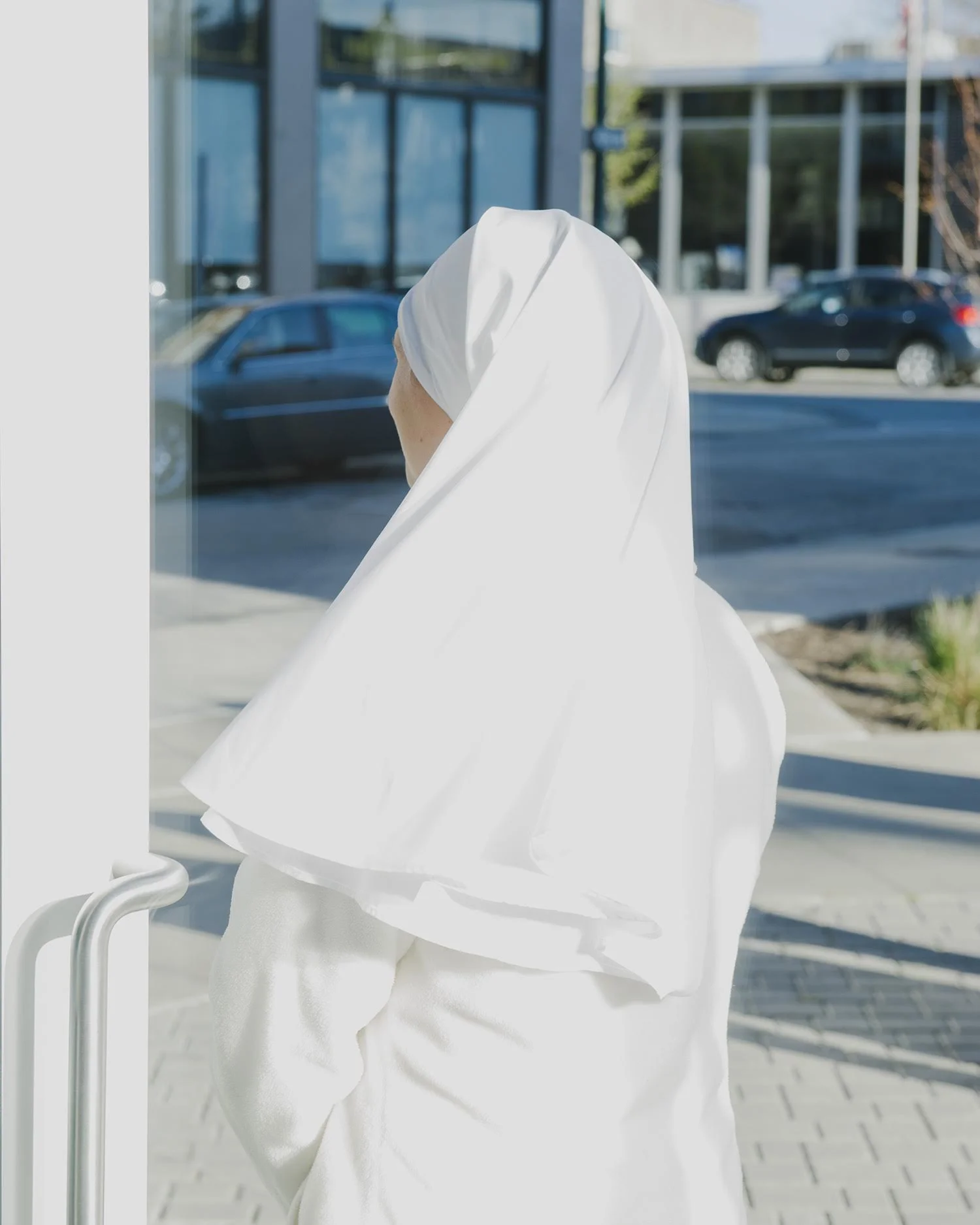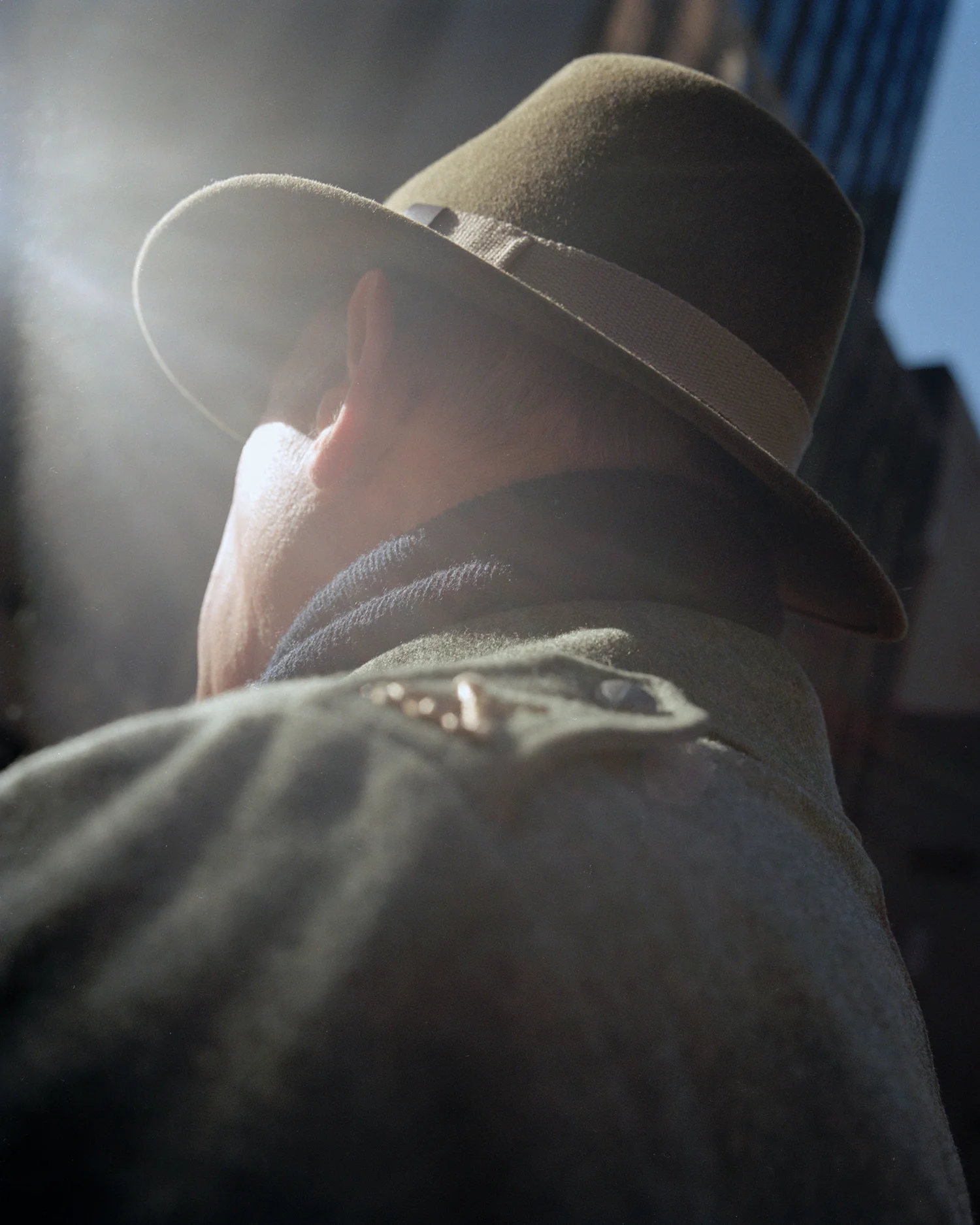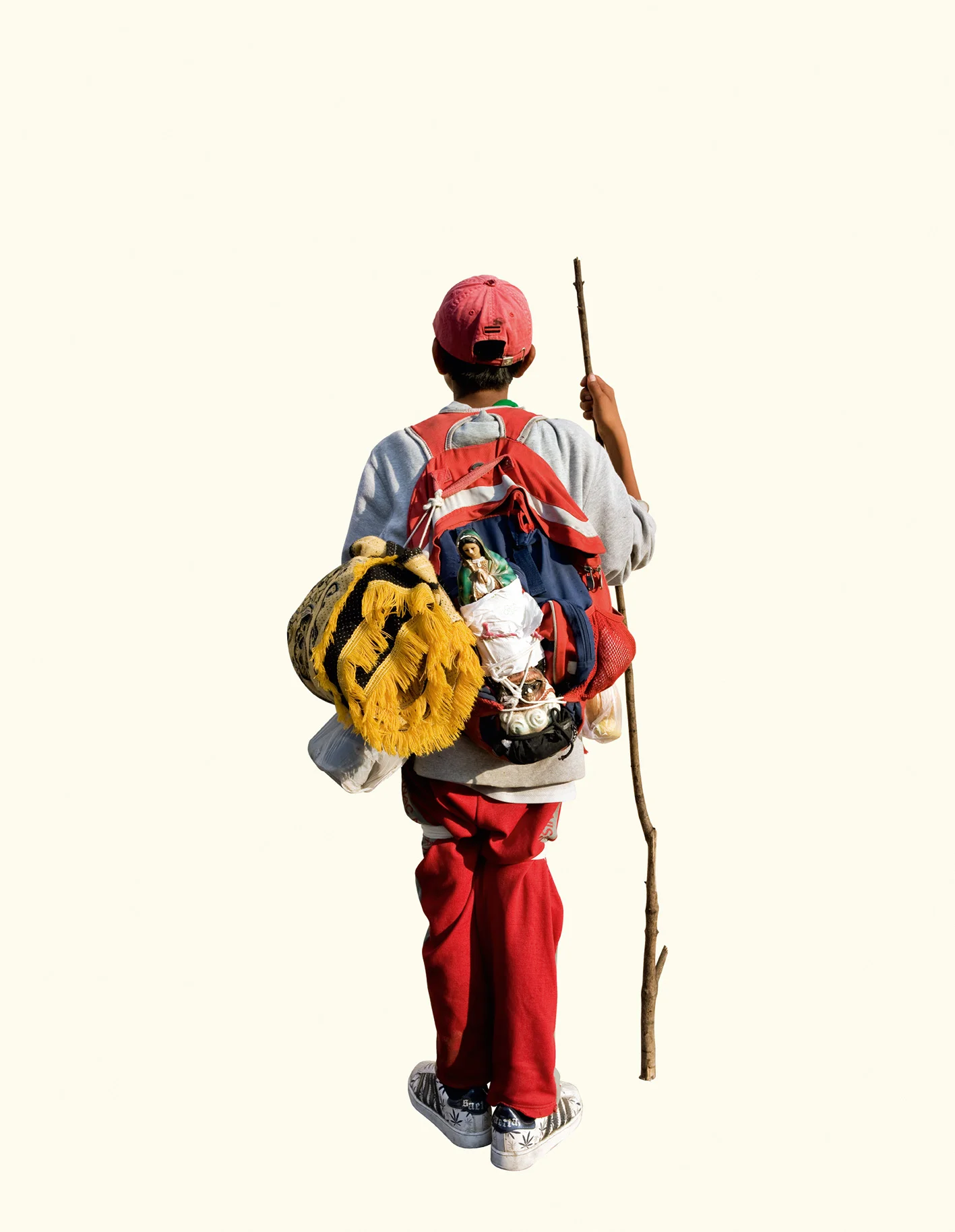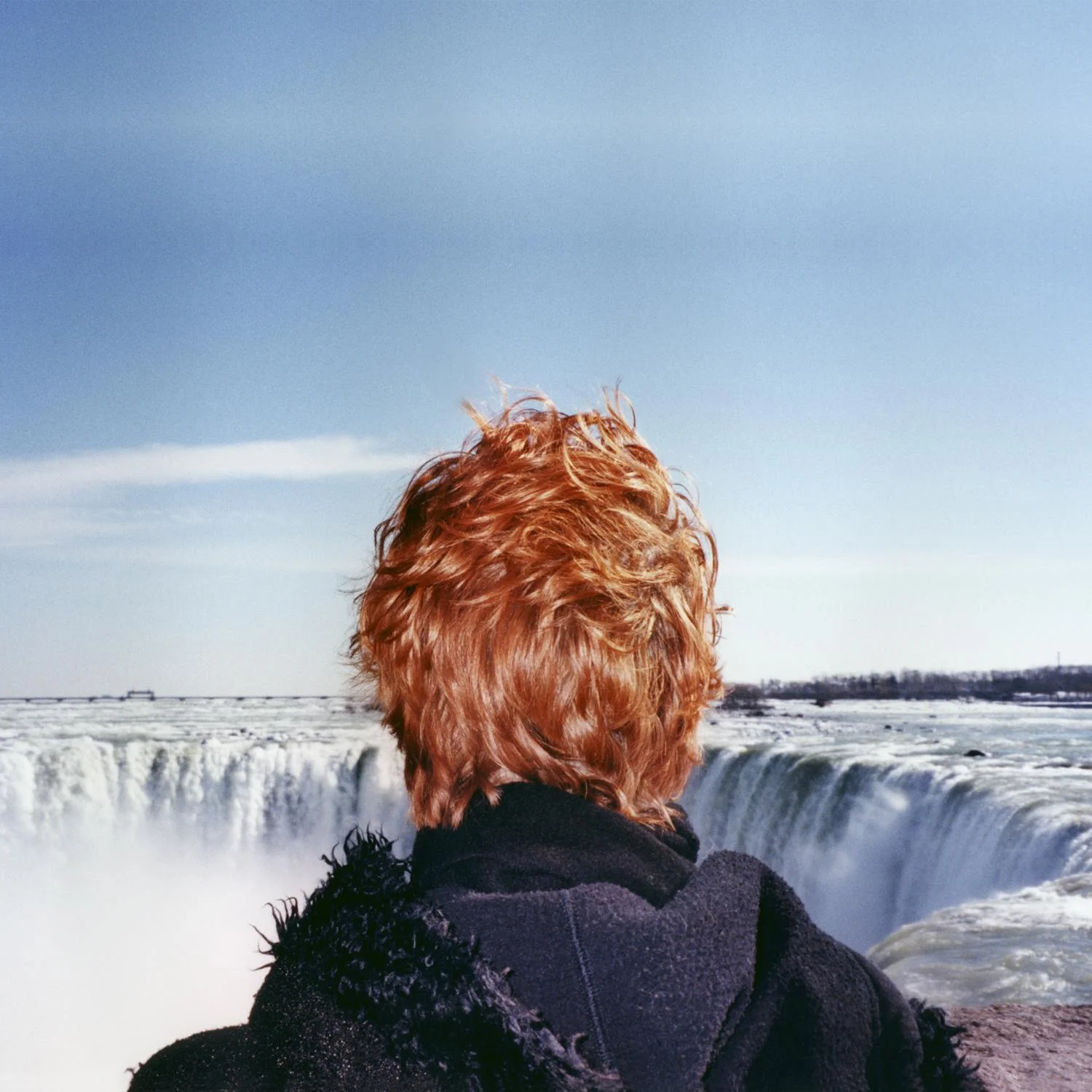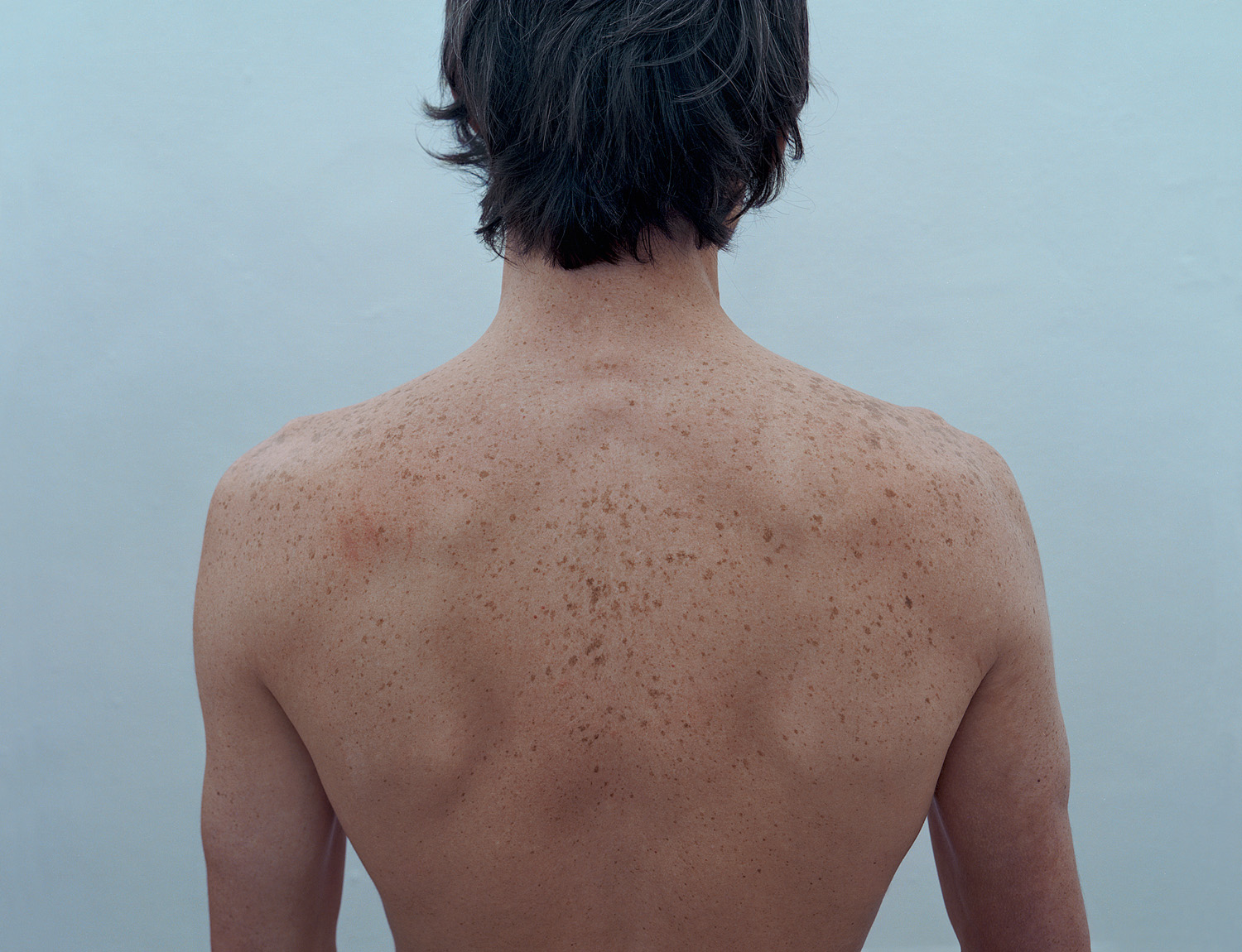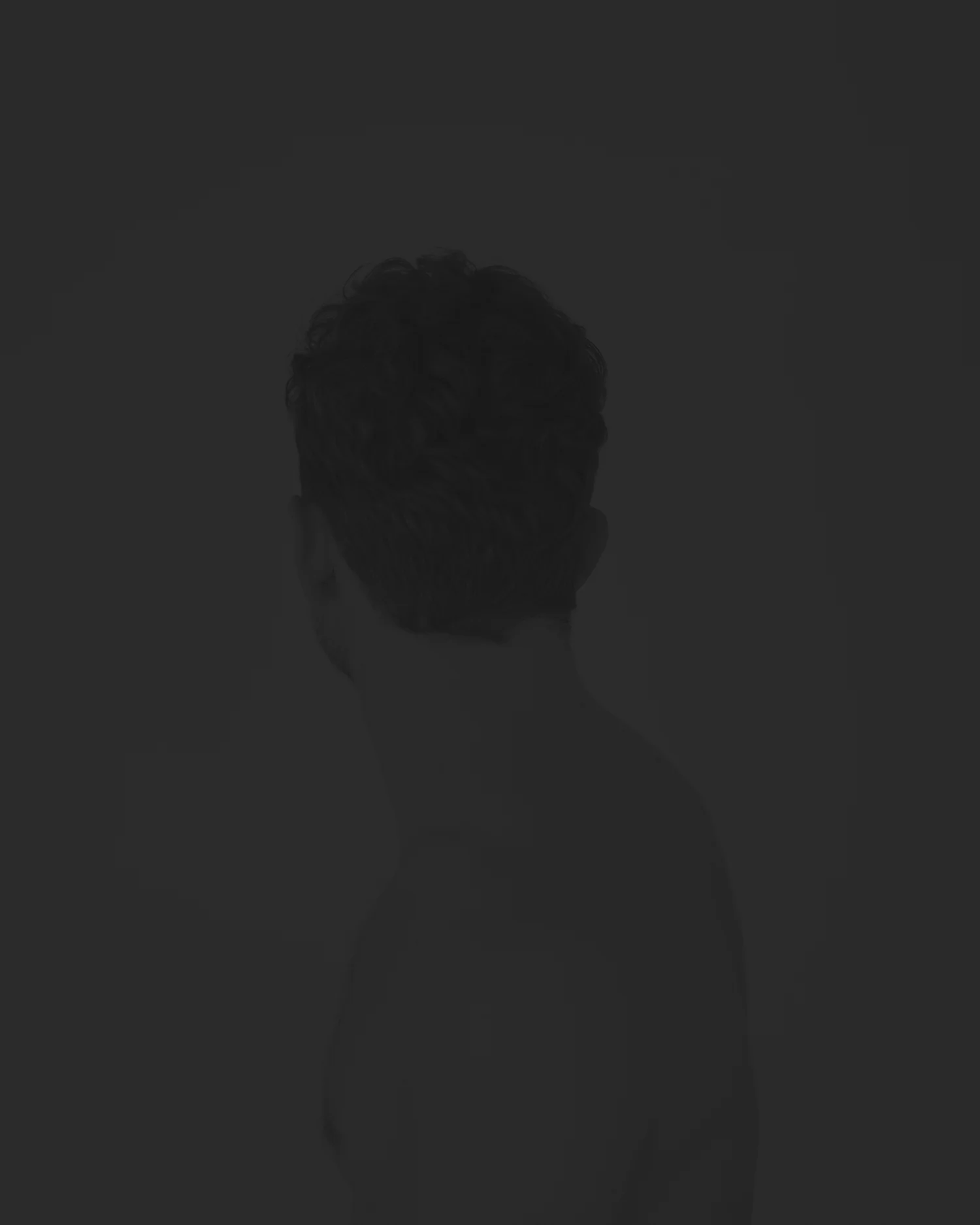Photo Courtesy of the Collection of Robert E. Jackson
The act of photographing someone from behind is often likened to voyeurism or timidity. Think Lee Friedlander's classic image of his shadow stuck to a fur-clad woman's back. Or the countless, anonymous, about-faced vernacular snapshots that shroud women in a creepy silhouette of men pursuing them with cameras. As a young teenager, one of my first photo teachers told me to avoid making this kind of portrait at all costs - their recommendation (or commandment!) was meant as an encouragement – to get to know people, explore something deeper, make a connection or challenge me to engage on a deeper level. But what can this sometimes frowned-upon approach disclose in gesture or body language? Can it tell us more than direct eye contact might pretend? Pace McGill curated a rather compelling exhibition of these kinds of portraits throughout photographic history last summer in NYC. Building on some of these historical notions, we contacted some of our favorite contemporary emerging and mid-career photographers to hear their about their own back-portraits, and their thoughts on this reversal of reveal.
Untitled #7, 2009 © Brea Souders
"This photograph is part of a series in which I dissected dreams from well-known writers, scientists and philosophers. In each piece I worked with a fragment from a dream of a particular person, and then filtered that fragment through my own consciousness. The project centers on the idea that we can never know how other people perceive the world. This image is based on a dream that the Marquis de Sade had about his mother."
Brea Souders
Bikini at Minnesota State Fair © Susan Barnett, from Not in Your Face. Courtesy of ClampArt
"By photographing from the back, I wanted to challenge the time-honored tradition of the portrait being of the face and test whether body type, dress and demeanor could tell us just as much as a facial expression might. Without seeing the eyes you are compelled to ask different kinds of questions and oftentimes the answers address questions without real answers. The sense of mystery is heightened by not seeing the front and a different kind of intrigue occurs. When seen from the back, identity is questioned and you are left with a sense of seeing through and around the person hoping to find different clues to the questions posed best by portraiture."
Susan Barnett
"Claire Monneraye, curator at the Australian Centre for Photography, awaiting the manifestation of her vision. April 2016, Sydney."
Katrin Koenning
Men's Swimming and Diving, Best In Show. © Matthew Leifheit
"This picture is from a series of photographs made on assignment for the Yale Daily News. The series is composed entirely of images the News chose not to publish, and this extra material is often more personally motivated than related to any assignment. In the moment of taking this picture in the visiting team's locker room after a competition, I knew enough to keep the swimmer's identity quiet if his body was to be revealed—both of us conscious of photography's efficient dissemination, and the almighty threat of showing too much."
Matthew Leifheit
Untitled. From Hide the Sun. © Paula McCartney
"While sunlight is absorbed by dark backgrounds during the day and absent in the darkness of night, the color yellow flows through the series providing a simulated source of illumination. Nature is displaced, or replaced and a view without context is unsettling. Not being able to see the subject’s face allows them to be both anyone and no one. "
Paula McCartney
2013 Orchard Beach. Bronx NYC © Ruben Natal San Miguel
"I took this photo on July 2013. I was so drawn to his "Bronx" word tattoo and then the "Rose" tattoo on his skull. I asked him how painful it must have been (to endure having his skull tattooed) and the story of the Rose tattoo, and losing his motherl. His answer was 'The tattoo is to honor the memory of Rose,' his mother, 'who endured and perished of terminal cancer. It was painful, but was more painful losing my mother and how much she suffered, so I wanted to have a eternal memory of her with me.' "
Ruben Natal San-Miguel
Untitled. From Buoy, 2015. © Anna Beeke
"When we look at a person, we recognize them as an individual mostly by their unique facial characteristics. The face shows emotions, it contains the brain, and to me it is the essence of a person. When I think of a friend, it is her face I imagine – that is the entry to her soul. If we can’t see the face in a portrait, the individual falls away, becomes an icon or archetype rather than a specific person. The image often becomes more metaphoric. Or, it is a mysterious puzzle. What can I learn about the person and situation from other signifiers in the frame? Usually a lot. In the portrait I have included you see a red braid, a tank top slightly dirty and inside out, drops of water on skin, mosquito bites, a backdrop of vegetation; so many clues from which to interpret this moment without seeing the subject’s face. "
Anna Beeke
Untitled, from the "i" series - 2014. Courtesy of Michael Hoppen Gallery. © Eamonn Doyle
"In taking these photographs, I tried to strip away many of the elements often expected in street photography - context, obvious biographical cues and signifiers, general ‘background noise’. I shot from above, mostly, and tried to flatten the figures into the pavements and roads, and I usually tried to avoid showing the face. Not showing faces seemed to be a way to evoke the very unknowability of these people and, perhaps, by implication, of all those with whom we have such fleeting, urban encounters. Portrait photography usually finds its expressiveness in faces; I want the viewer to look elsewhere, to find cues other than the obvious ones, to look harder and, if needs be, to infer the missing faces. "
Eamonn Doyle
Untitled, 2015 © Ka-Man Tse
"This photograph is part of my series Narrow Distances, which explores how individuals in the LGBTQ community navigate their identities within contemporary Hong Kong. The protagonist in this photograph chose a more peaceful, beautiful part of Hong Kong,Tap Mun, and we spent the day on this island. Her back turned is for two reasons: I have to keep her anonymous to protect her identity and privacy. Second, by not showing someone’s face, they can become stand-ins for ourselves, for others, and also talks about larger issues of access and disclosure, visibility and protection. Even though her face is not revealed, it was important to show that she has agency; confronting this dense wall of unknown, she nevertheless possesses strength, confidence, and a cool, knowing intelligence."
Ka-Man Tse
Dad and Moon, 2008. © Rory Mulligan
"This photograph relates to a sort of 'double gaze' in which I'm watching someone watch something else. In this instance my father gazing at a full moon in the front yard of my parents' house. The form of the photograph leans more towards the recording of a quiet and possibly ambiguous moment, rather than a more voyeuristic or predatory gaze of an unsuspecting subject."
Rory Mulligan
'What's Your Backstory?' is a collaboration between photographer Andrew McGibbon and performer Becka McFadden. The project is a spin-off of Beautiful Confusion Collective's BackStories, a physical theatre/dance piece conceived by McFadden and Scheherazaad Cooper, which is performed with the back facing the audience. We're interested in the notion of backstory as personal history, but also as the story of the physical back and the way it stores and expresses information about our present and past. The 'What's Your Backstory?' project takes BackStories beyond our own backs, exploring the stories of others.
Becka McFadden and Andrew McGibbon
Editor's note: Above image by William Mebane. Submitted without words. We'll leave this a mystery.
"The Artist" © Kris Graves
"One of my ideas was to create an artwork that would keep the viewer guessing. The image is named The Artist, so the first thing to question would be if the subject were male or female. Also, you could only make assumptions of identity and race since there is no visible skin."
Kris Graves
"I was hired to photograph a fundraiser for a Catholic private school at a performing arts space in Cleveland. This Sister of the affiliated church kept catching my eye, and I would return to this spot throughout the evening to photograph her through the window. Obscuring the subject’s face causes the viewer to project their own memories and emotions into the photograph, and so the context of the image changes depending on who is looking at it. I cursed myself for overexposing (I was shooting inside at the time) and blowing out quite a bit of the image. I kept going back to make a better photograph but just couldn’t recreate what I loved so much about this one."
Dale Rothenberg
From the series Executive Model © Ron Jude
"An important aspect of these photos has to do with the estrangement I felt to my subjects. The period during which I made these pictures (1992-95) I was living in Atlanta, and it was the first time I’d ever lived in a truly urban situation with a thriving financial center. I was living pretty poorly, and the world of money seemed very out of reach to me. I had every advantage one could possibly have—I was an educated white guy living in America—and yet, as someone who was raised in a rural, working class environment, these guys who were driving the economy and reaping the rewards seemed utterly foreign to me. I didn’t know who they were or what they were thinking. On one level I was one of them, but it felt more profoundly like they constituted a club to which I would never belong."
Ron Jude
The Road to Tepeyac © Alinka Echeverria
"The project started during a visit to the Basilica de Guadalupe in Mexico City during the anniversary of the apparition of the virgin. Approximately 8 million pilgrims visit the site over 4 days. The story of the apparition is that the Virgin appeared five times to the indigenous man Juan Diego in 1531 at the ancient site of the Aztec Goddess Tonantzin. I was amazed by the seemingly infinite representations of the virgin that the pilgrims were carrying. I was brought up in a secular home, so it led me to question the relationship between image of belief - why have it? Why carry it for ten days to the original site? Why decorate it? I found the simple act of carrying a reproduction of the sacred image so rich in questions, that I decided to focus purely on this by photographing the backs of the pilgrims who were carrying images of the Virgin. During the pilgrimage, their personal representation of the Virgin, as well as their clothes and the few objects they chose to carry are more revealing of their identity as pilgrims in the context of 'The Road to Tepeyac' than their face would be. The decontextualisation is intended to remove the visual pollution and allow the reintegration of the three hundred images in the series in an immersive installation."
Alinka Echeverria
Catherine, Niagara Falls. © Derek Shapton
"We are programmed as a species to seek out and react to faces and facial expressions. I like how the simple act of photographing someone turned away from the camera introduces a narrative to a photo and subverts this impulse. We still see a person but are forced to imagine their face, and from there it is a small step to telling ourselves a story about them. It's almost impossible not to, in fact."
Derek Shapton
Beautiful Boy © Lissa Rivera
"By forcing the viewer to imagine the face, the subject of the photograph becomes, even more than usual, a mirror of the viewer’s own imagination or desires—it opens up a greater range of fantasy. The photo lures the viewer with the signifiers of femininity: blond hair, red nails, a flower in the hair. I was interested in the idea of mistaken identity, particularly around the cultural idea that trans women or individuals who pass as women are going to “trap” heterosexuals into feeling a desire that they’re not comfortable with. This idea, which is deeply offensive on many levels, is also very fascinating, and reveals a lot about the instability or vulnerability of gender roles."
Lissa Rivera
"This image was taken on my first and only visit to Stone Mountain in Georgia. When I got off the cable car at the summit, I was immediately struck by the strangeness of the place, but also by how people interacted with it. For me, to photograph someone from behind is to make an image about a kind of double vision - the vision of the photographer and that of subject whose face we cannot see. When I look at this image, I find myself envisioning what this scene looked like from her perspective. Are her eyes following her husband who's walking off into the distance with his camera? Or is she looking at the faint Atlanta skyline? Or is it something else entirely, something off camera that we cannot see?"
Ben Alper
Back (Self-Portrait), 2003 © Mickey Kerr
"I could never understand the idea that one could take a photograph of somebody and it could reveal their 'true self." Because to me, a part of the photographer would always exist in his or her portrait. In 2003, I set out to document my friends and I in the truest way I could think of, with straight photographs. I tried to strip away all artifice and context, such as wardrobe, environment and facial expressions. It was an attempt to reveal something intimate and pure about the subject. This self-portrait was the first photograph taken in what became the "Portrait Series." Setting up the shot, I remember I wanted no outside influences. And I knew if I faced the camera, I'd want to play the part of anyone else but me. So I turned around, and I felt more at ease, more myself."
Mickey Kerr
Untitled (XIV) © Rafael Soldi
"This is the first image I made for Life Stand Still Here, which opens at Glass Box Gallery in June 2016. I made this image nearly three years ago very intuitively as a departure point from previous work, not knowing if it would become anything—it was a commission by the Frye Art Museum in response to a poem by James Joyce. Even though the image does not depict me, I've come to think of it as a self-portrait. This body of work is an attempt to understand my most abstract inner self, and to me this image represents the birth of my interest—faint at the time—to look inward towards a place that was dark and out of reach. "
Rafael Soldi. (Editors note: Rafael is currently fundraising to support his upcoming solo-exhibition at Glassbox Gallery in Seattle. You can buy an affordable poster of this image and more HERE)
"What does it mean to photograph someone from behind? It is something I do quite a lot, but have never tried to articulate. In studies and scientific tests, the idea of neutrality / not knowing the identity of the subject is vital, to retain a sense of objectivity. Looking at (my) images of people shot from the back however, it seems like the viewer might be *more* apt to jump to conclusions and not less. Could this be the visual equivalent of anonymous trolling where a person can say things they might not say or think if they were looking at someone’s face?"
Beth Herzhaft
"Frenched" from the series Pink Crush. © Frances F. Denny. Courtesy of ClampArt
"This photograph is from Pink Crush (2015), a project about the impact of a certain category of feminine tropes from 90’s pop culture. The series is made up of still lifes and figures photographed from behind. I chose my subjects for their particular physical idiosyncrasies, but in order to conceal their ages and identities, I opted not to photograph their faces—faces more easily reveal character and personality. I also didn’t envision the ‘figure’ pictures in the series functioning as portraits of the individuals so much as vehicles for a viewer to see herself in the work. Frontal portraits might have inhibited that kind of projection."
Frances F. Denny
08/26/14 'An American God' or 'Big Brother is Watching' © Philip C. Keith
"I think that a portrait becomes more mutable, or presents a reductionist image when excluding the face. It removes identity almost entirely and leaves only the human form to be interpreted as a prosthetic or symbol."
Philip C. Keith


